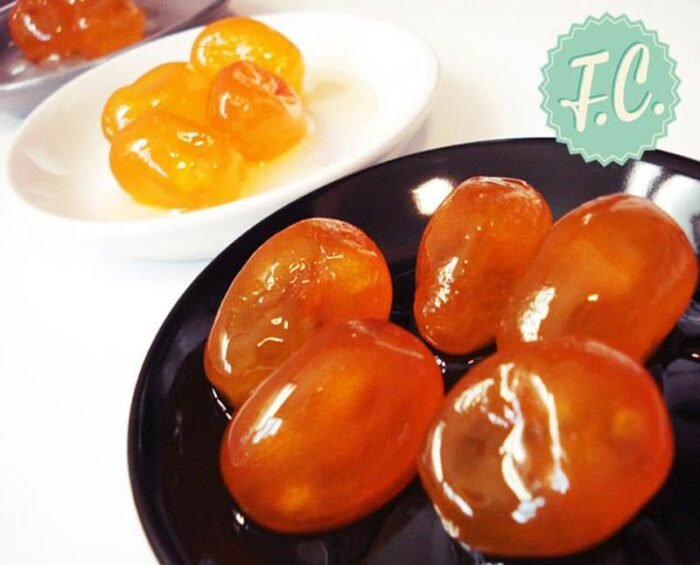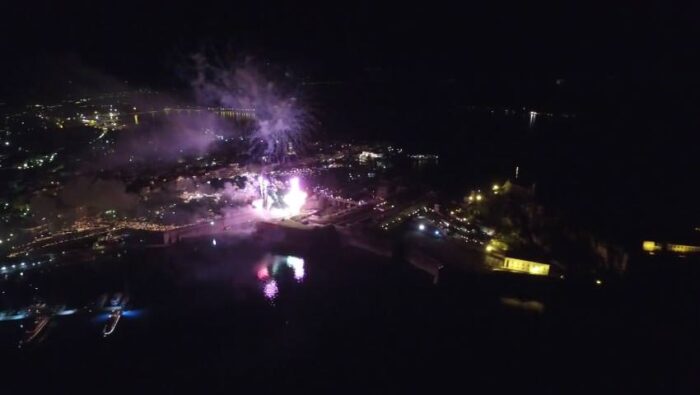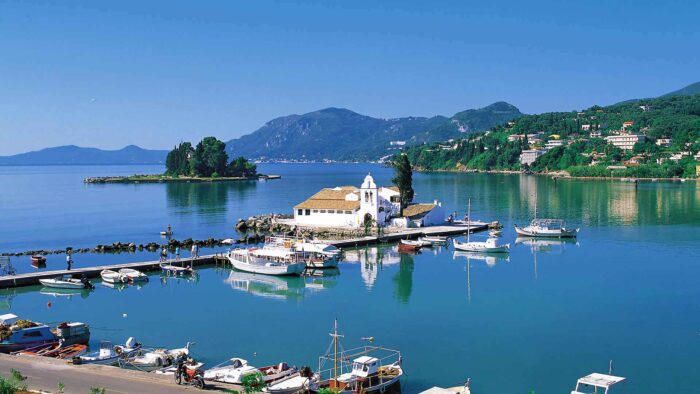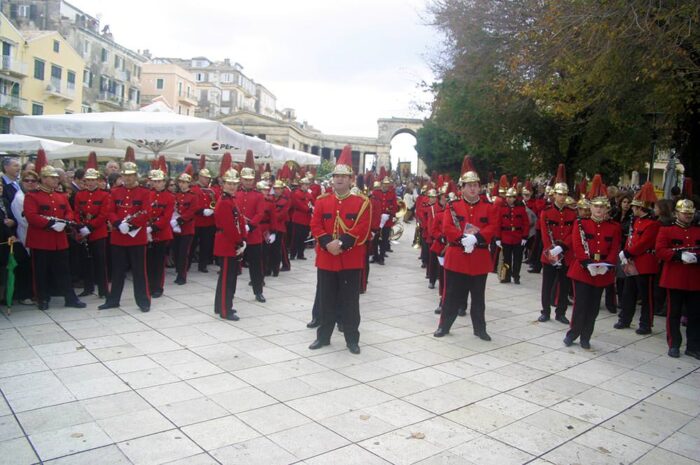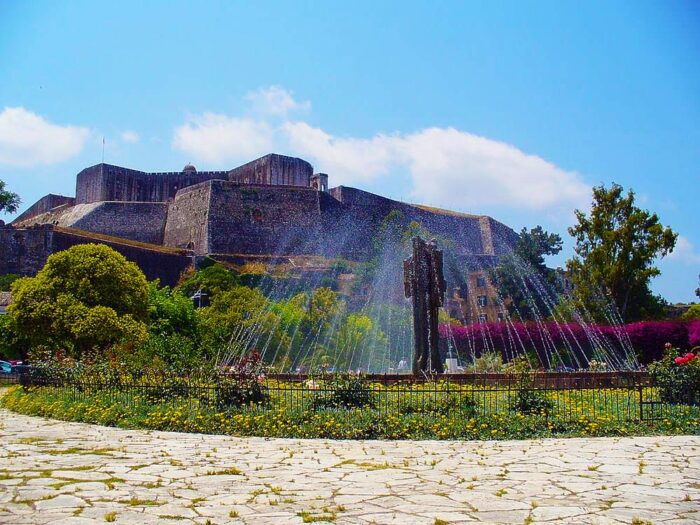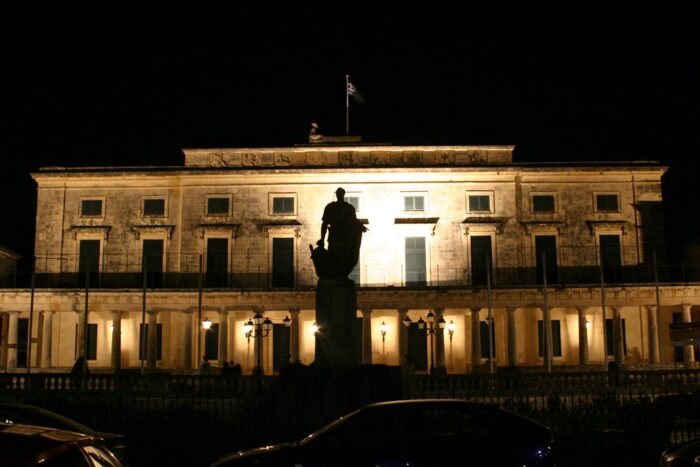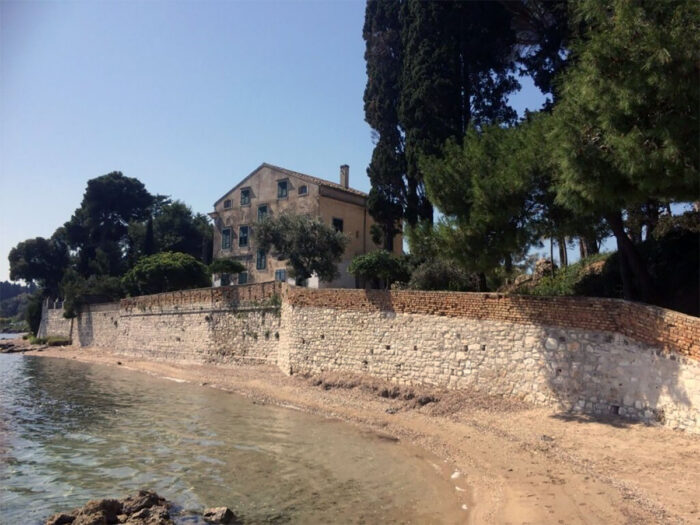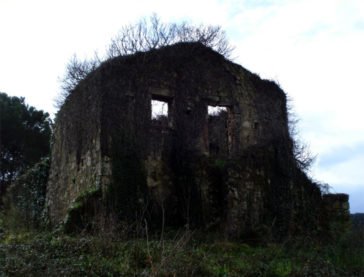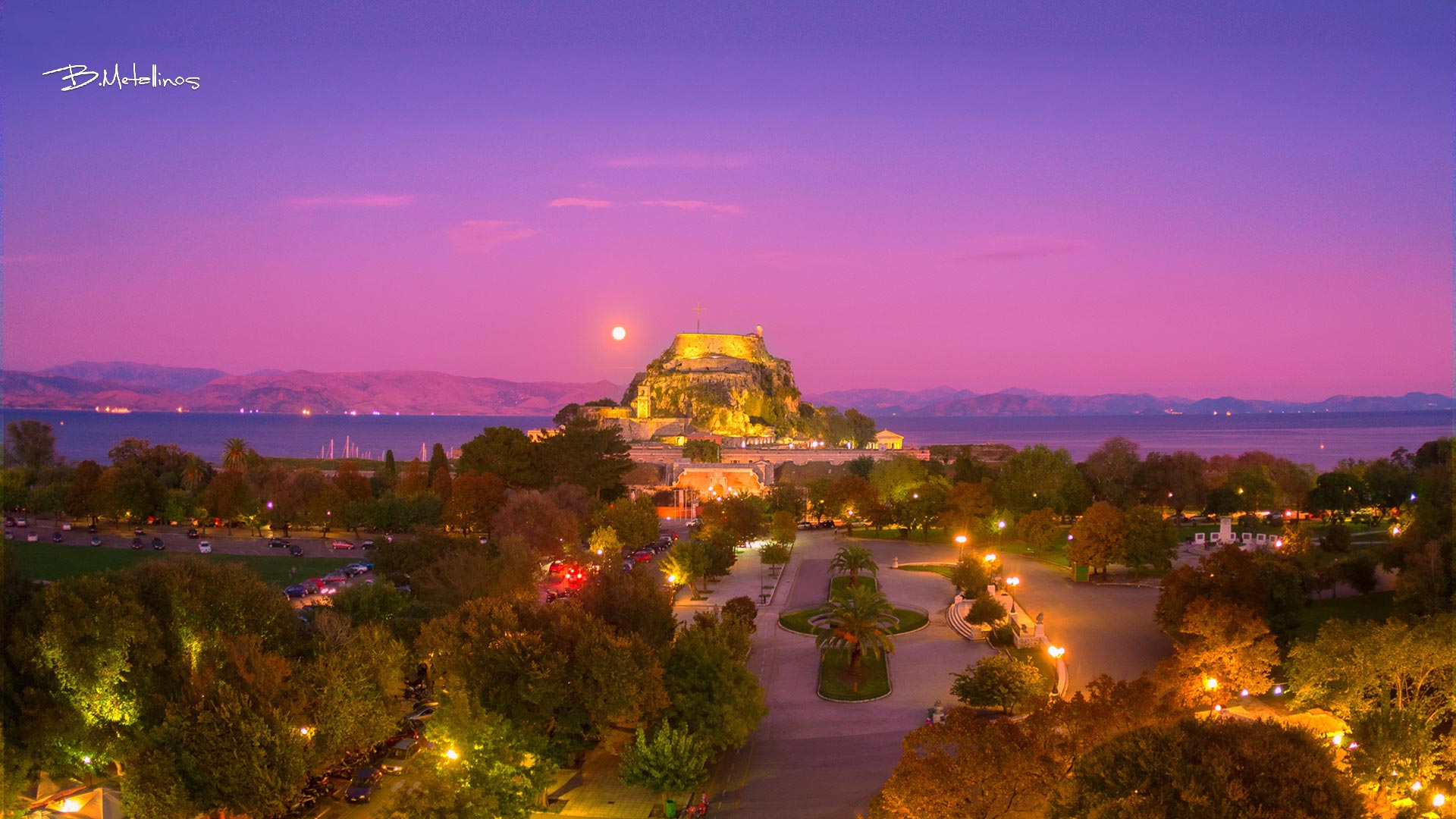
Last updated on September 17th, 2024 at 02:16 pm
Table of Contents
Toggle- Corfu is famous for a series of things
- The Esplanade and Liston Promenade
- Kumquat Liqueur and Spoon dessert
- Easter Traditions and Celebrations
- Pontikonisi (Mouse Island)
- Corfiot Bands and Music
- Corfiot Dialect
- Historical Crossroads
- Venetian Architecture
- Old and New Fortresses
- Achilleion Palace
- Corfiot Cuisine
- Population and Historical Significance
- Palace of Saints Michael and George
- Royal Birthplace
- The Durrells
- Cricket
- Ottoman-Free
- Read More
Corfu is famous for a series of things
Beyond its natural beauty, what is Corfu famous for?
Corfu is famous for many things. It was a melting pot of Greek, Venetian, French, and British influences, evident in its architecture, traditions, and cuisine.
These diverse influences make Corfu famous and distinct from the rest of Greece, with its Old Town resembling an Italian rather than a Greek town.
The following list highlights some unique architectural and cultural aspects that set Corfu apart from the Greek landscape:
The Esplanade and Liston Promenade
Spianada Square, one of Europe’s largest squares, is a central hub in Corfu.
It is bordered by the Liston Promenade, a historic arcade originally constructed as military barracks by the French in the early 19th century. Designed by architect Mathieu de Lesseps, the Liston was inspired by Paris’s Rue de Rivoli and was repurposed into a stylish promenade with elegant arched terraces.
Today, it is lined with cafes and restaurants, serving as a key location for social and cultural events on the island. The Liston’s architecture reflects both Venetian and French influences, contributing to Corfu’s unique character.
Kumquat Liqueur and Spoon dessert
Corfu is renowned for its kumquat fruit, which originated in China.
The tiny citrus was introduced to the island by the British, and it has since become a local specialty.
Unique to Corfu and a few other European locations, kumquats are used to create distinctive local products.
The island’s kumquat liqueur captures the fruit’s tangy flavor, while kumquat spoon desserts are traditional preserves enjoyed as a sweet treat. These local delicacies highlight Corfu’s unique adaptation of this exotic fruit.
Easter Traditions and Celebrations
Corfu’s Easter celebrations are renowned for their unique traditions, including the dramatic custom of throwing clay pots from windows during the Holy Saturday Resurrection ceremony.
This tradition, which symbolizes the renewal of life and the arrival of spring, fills the air with the festive sound of breaking pots.
During this period, Corfu becomes a bustling hub, with visitors flocking to experience the island’s vibrant Easter festivities. The influx of tourists highlights the significance of these celebrations in Corfu’s cultural calendar.
Pontikonisi (Mouse Island)
Located near Kanoni, Pontikonisi, or Mouse Island, is a small but picturesque island. It is famously paired with the nearby Vlacherna Monastery, which enhances the island’s charm and beauty.
This serene spot is a popular attraction, offering stunning views and contributing to Corfu’s enchanting landscape.
Corfiot Bands and Music
Corfu’s musical tradition is characterized by its use of wind and brass instruments, which are prominently featured during religious processions and festivals.
The island’s bands bring a unique and vibrant sound to local celebrations, reflecting Corfu’s rich cultural heritage and adding to its festive atmosphere.
Corfiot Dialect
The Corfiot dialect was a Greek dialect with a unique touch of Italian influence.
This influence is evident through the incorporation of Italian words that were Hellenized over time. Though now considered a dead dialect, with only a few elderly residents remembering it, the dialect remains a testament to Corfu’s historical connections with Italy.
Historical Crossroads
Corfu’s rich history is marked by significant influences from the Venetians, French, and British. These diverse cultural impacts are reflected in the island’s architecture, traditions, and overall culture, creating a unique blend that distinguishes Corfu from other Greek locales.
Venetian Architecture
Corfu’s architecture is deeply influenced by Venetian rule, featuring narrow streets, arched doorways, and pastel-colored buildings. This distinctive style is particularly prominent in the town, showcasing the lasting impact of Venetian design on the island’s urban landscape.
Old and New Fortresses
The Old and New Fortresses in Corfu are prominent landmarks offering panoramic views of the island.
Dating back to Byzantine and Venetian times, these fortresses are key historical sites that highlight Corfu’s strategic military significance and architectural heritage.
Achilleion Palace
Built by Empress Elisabeth of Austria, the Achilleion Palace is a stunning neoclassical estate featuring statues and gardens inspired by Greek mythology.
The palace reflects a blend of grandeur and artistic influence, making it a key historical and cultural site in Corfu.
Corfiot Cuisine
Corfiot cuisine is a rich tapestry of Venetian, French, British, and Greek influences.
It features distinctive dishes such as Pastitsada, Sofrito, and Bourdeto, showcasing a blend of flavors and traditions unique to the island.
Population and Historical Significance
Corfu, the most densely populated Greek island, is notable for its historical achievements.
It is home to Greece’s first university, commercial bank, electricity factory, and modern theater, reflecting its significant role in the country’s development.
Palace of Saints Michael and George
The Palace of Saints Michael and George is a unique architectural landmark, notable for being the only Georgian-style palace outside the UK.
Built during the British Protectorate of Corfu, it features elegant neoclassical design elements and was originally constructed to house the British High Commissioner.
Today, it serves as a museum and hosts various exhibitions, showcasing its historical and cultural significance.
Royal Birthplace
Corfu is the birthplace of several European royals, including Prince Philip of Edinburgh. This historical significance adds to the island’s rich cultural heritage and its connection to European royalty..
The Durrells
The renowned Durrell family lived in Corfu from 1936 to 1940. Their time on the island inspired Gerald Durrell’s famous memoir, My Family and Other Animals, highlighting the family’s deep connection to the island’s landscape and culture.
Cricket
Corfu is home to Greece’s only cricket team, a legacy of British influence on the island. This unique sport reflects the historical ties between Corfu and Britain.
Ottoman-Free
Corfu remained free from Ottoman rule throughout its history, resulting in a distinct absence of Ottoman influences in its culture and architecture.
Read More
What is Corfu famous for?
Beyond its natural beauty, what is Corfu famous for? as a melting pot of various civilizations, is famous for its architecture, traditions, and cuisine.
Corfu Musical Tradition – Literature and Intellectuals
Corfu’s rich cultural heritage features a strong musical and literary traditions that continue to shape the island’s cultural identity until today.
Melodic Corfu: A Symphony of Culture, Music, and Beauty
Corfu, the musical heart of Greece, where the very air seems to harmonize with the soulful sounds of music when musical charm doesn’t stop at instruments and performances only.
Corfu Easter 2020: All Events Canceled Due to Coronavirus Pandemic
For Easter 2020 it would be funny to think about events and celebrations and even more for visitors.
After all, to limit the COVID-19 disaster as much as we can, we have no other way than isolation.
Sagrado – What does this word finally mean?
Have you ever heard of Sagrado? No, not the restaurant in Corfu town, but a term that harkens back to Medieval and Venetian times.
Corfu Dialect: Interesting Typical Words
This process created the Corfiot dialect, a Greek language with Italian-Greek words that follow Greek grammar and syntax

